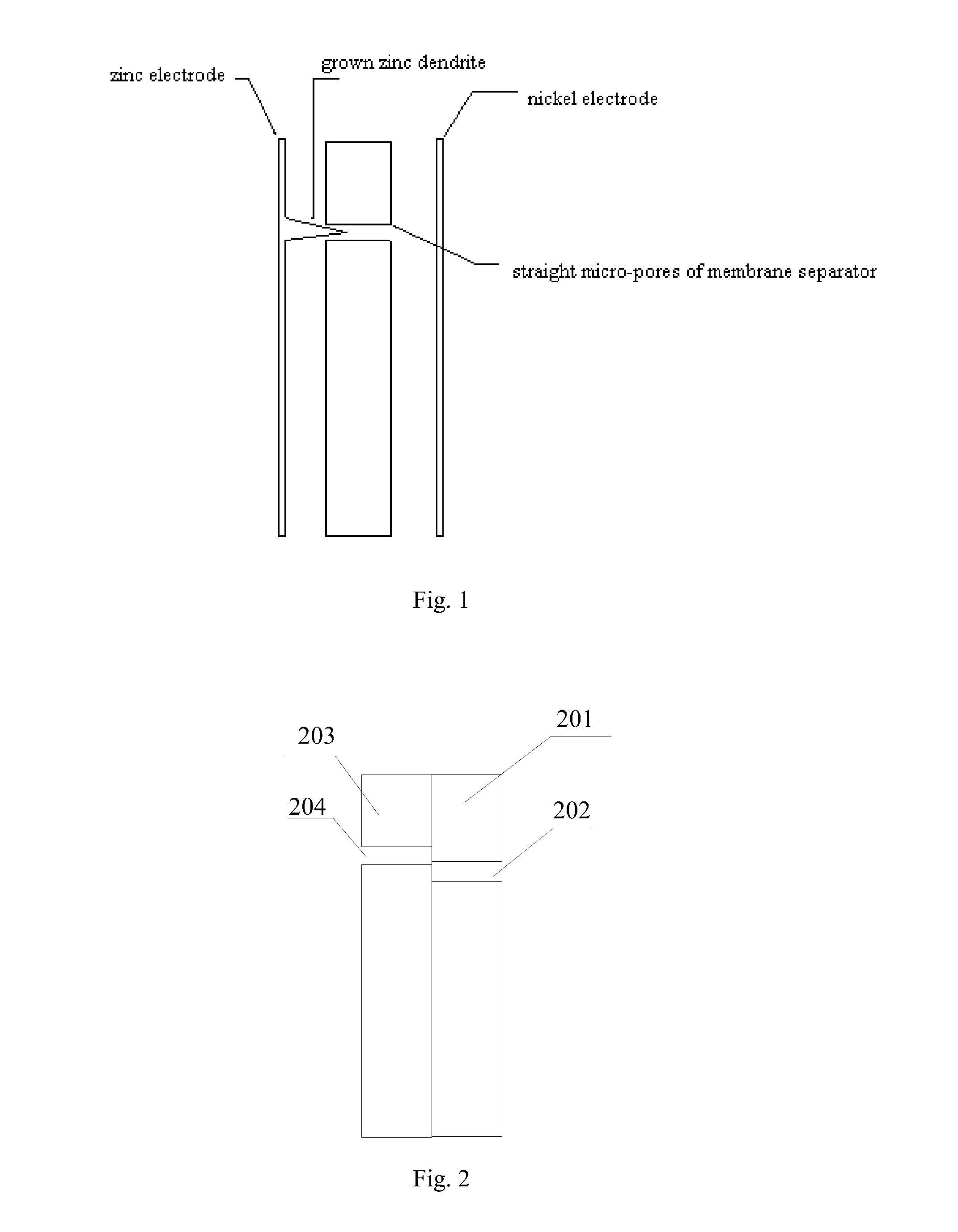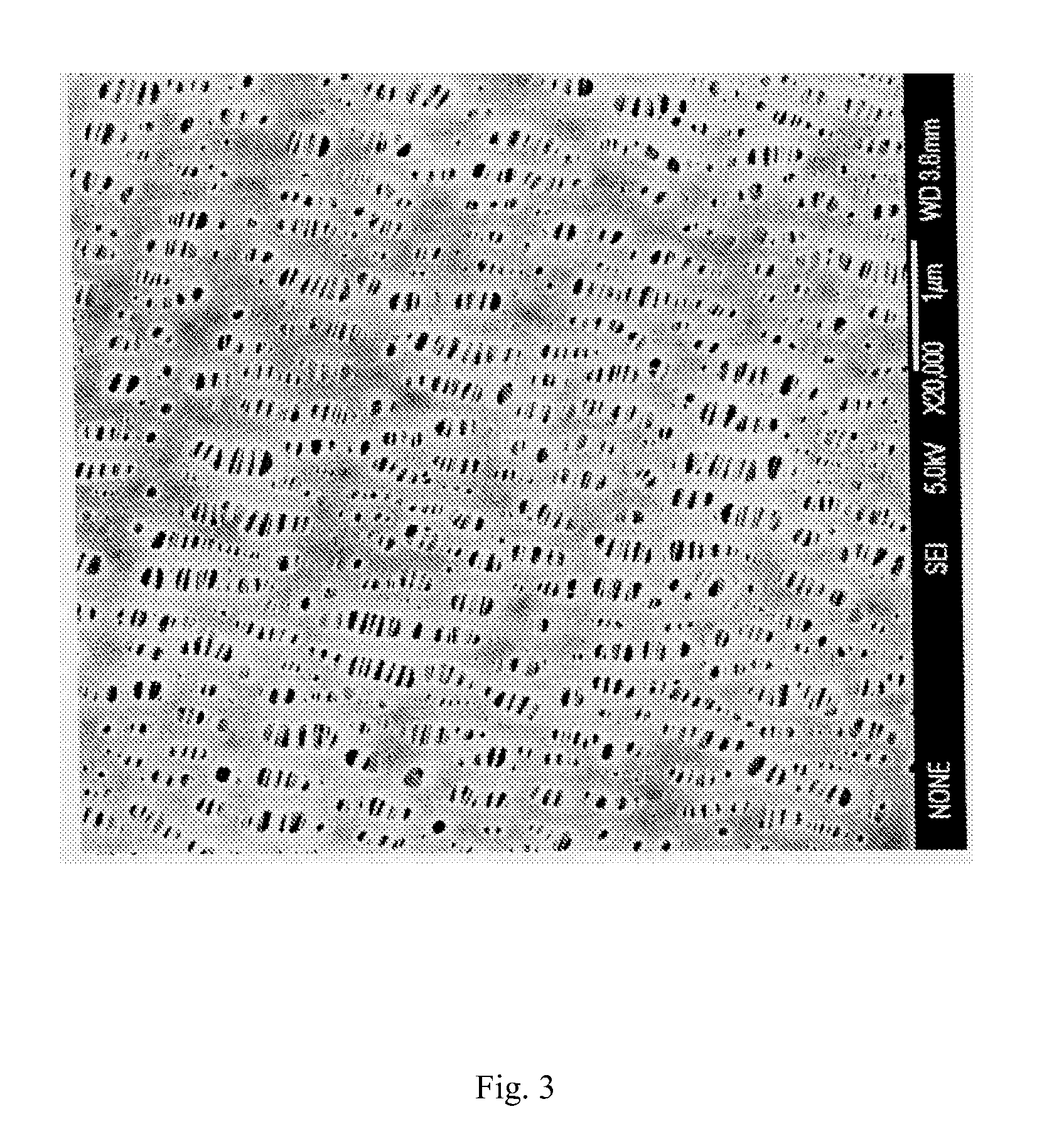Method for preparing separator of battery
- Summary
- Abstract
- Description
- Claims
- Application Information
AI Technical Summary
Benefits of technology
Problems solved by technology
Method used
Image
Examples
example 1
[0058]Preparing the treating solution for the membrane separator of the battery:
[0059]weighing 95.23 g H2O and preheating to 60° C.;
[0060]adding 1.523 g FCNTACARE-1202 non-ion surfactant to the preheated H2O, and agitating at 3 rad / 1 s for 15 min to provide the first solution;
[0061]adding 1.904 g INTECHEM-01 fluoro-carbon surfactant and 1.343 g KY-1028A wetting leveling agent to the first solution, agitating at 1.7 rad / 1 s for 7.5 min and then magnetically agitating at 1.5 rad / 1 s for 70 min to provide the treating solution for the membranes separator of the battery.
[0062]Preparing the polypropylene microporous composite film:
[0063]drawing the first polypropylene film in one direction at −4° C., and keeping it at 50° C. for 1 hour to provide a first polypropylene microporous film having a thickness of 0.10 mm, an areal density of 15 g / m2, an air permeability of 40%, a pore-area piercing strength of 1250 g, a longitudinal tensile strength of 1650 kgf / cm2, a horizontal tensile strengt...
example 2
[0072]The membrane separator of a nickel-zinc battery produced by Guangdong Power Link Ltd. Corp. was replaced with the membrane separator prepared according to the example 1, and then the nickel-zinc battery with the replaced membrane separator was charged for 100 hours. No dendrite penetration was observed for the membrane separator of the battery.
example 3
[0073]Preparing the treating solution for the membrane separator of the battery:
[0074]weighing 95.23 g H2O and preheating to 60° C.;
[0075]adding 1.523 g FCNTACARE-1202 non-ion surfactant to the preheated H2O, and agitating at 3 rad / 1 s for 15 min to provide the first solution;
[0076]adding 1.904 g INTECHEM-01 fluoro-carbon surfactant and 1.343 g KY-1028A wetting leveling agent to the first solution, agitating at 1.7 rad / 1 s for 7.5 min and then magnetically agitating at 1.5 rad / 1 s for 70 min to provide the treating solution for the membranes separator of the battery.
[0077]Preparing the polypropylene microporous composite film:
[0078]drawing the first polypropylene film in one direction at −6° C., and keeping it at 55° C. for 1 hour to provide a first polypropylene microporous film having a thickness of 0.12 mm, an areal density of 28 g / m2, an air permeability of 45%, a pore-area piercing strength of 1480 g, a longitudinal tensile strength of 1720 kgf / cm2, a horizontal tensile strengt...
PUM
| Property | Measurement | Unit |
|---|---|---|
| Temperature | aaaaa | aaaaa |
| Temperature | aaaaa | aaaaa |
| Time | aaaaa | aaaaa |
Abstract
Description
Claims
Application Information
 Login to View More
Login to View More - R&D
- Intellectual Property
- Life Sciences
- Materials
- Tech Scout
- Unparalleled Data Quality
- Higher Quality Content
- 60% Fewer Hallucinations
Browse by: Latest US Patents, China's latest patents, Technical Efficacy Thesaurus, Application Domain, Technology Topic, Popular Technical Reports.
© 2025 PatSnap. All rights reserved.Legal|Privacy policy|Modern Slavery Act Transparency Statement|Sitemap|About US| Contact US: help@patsnap.com


